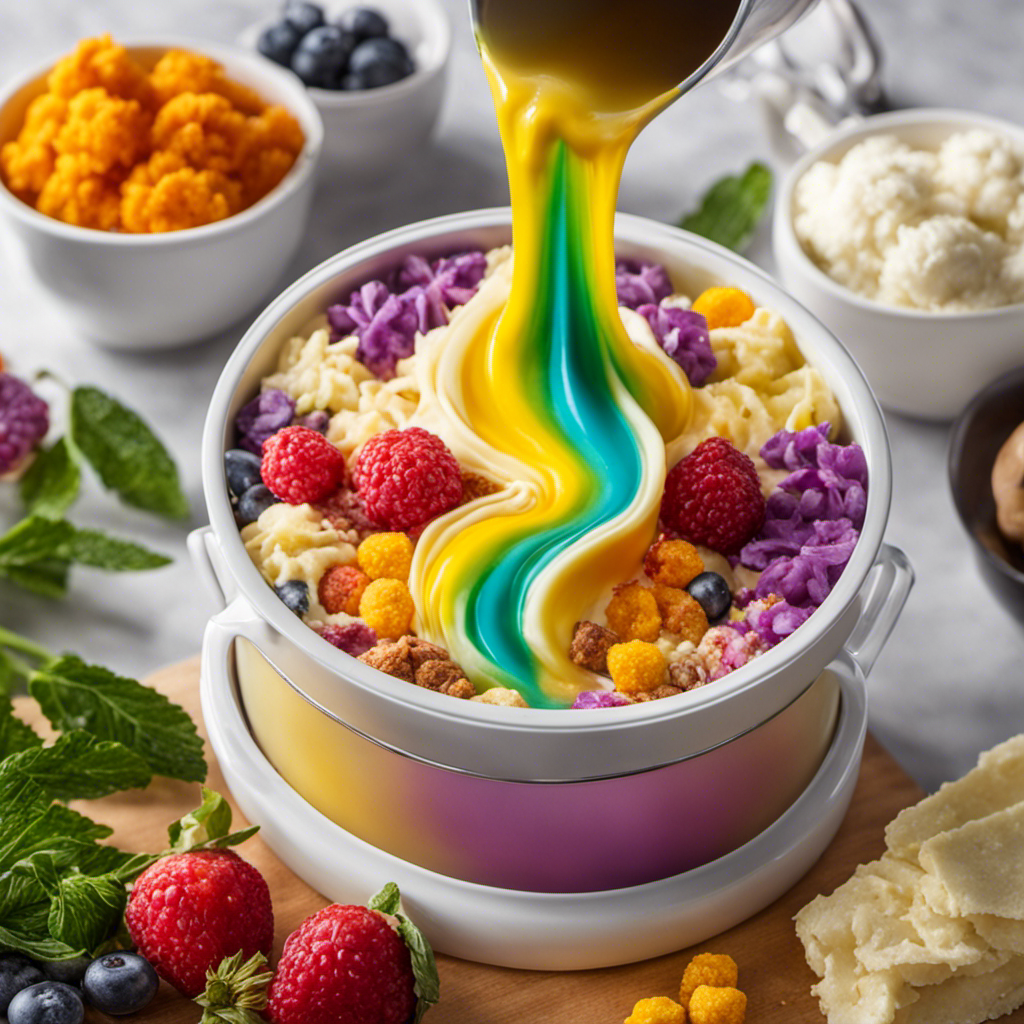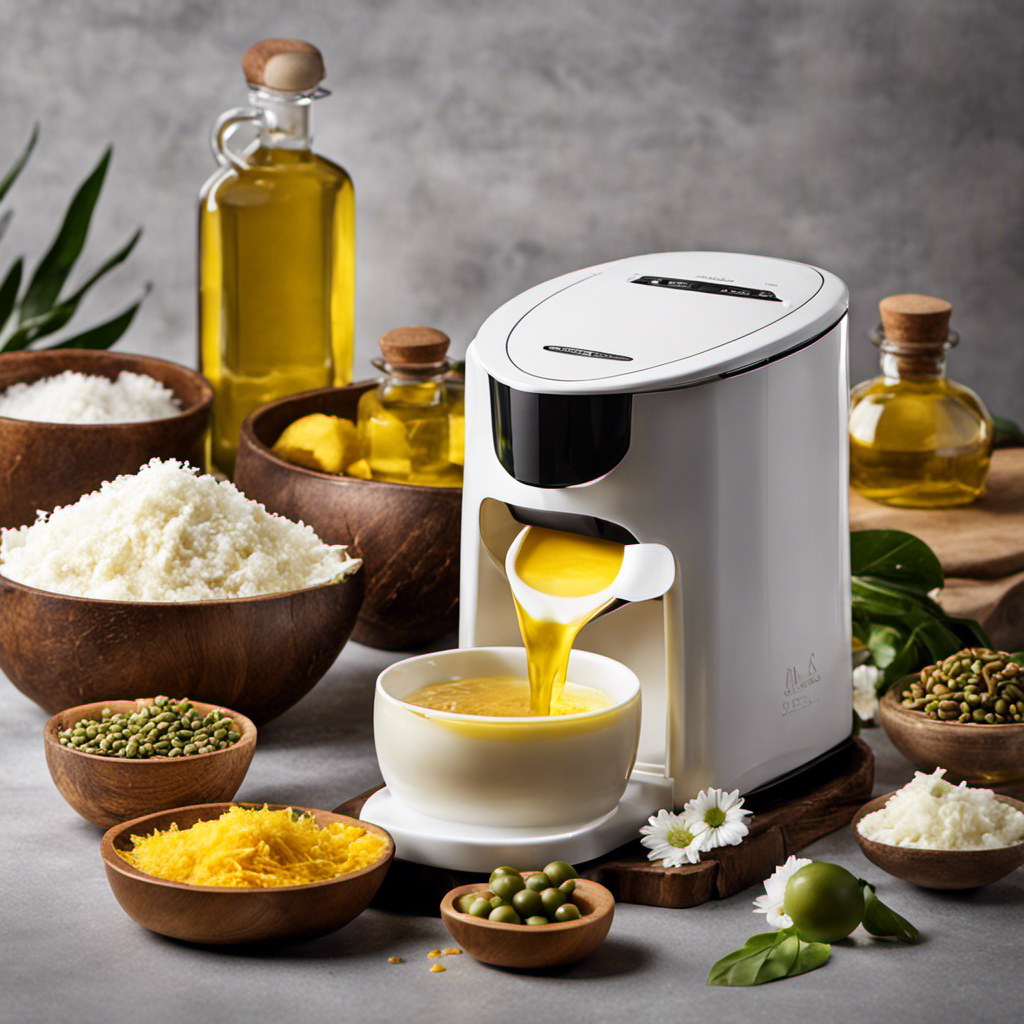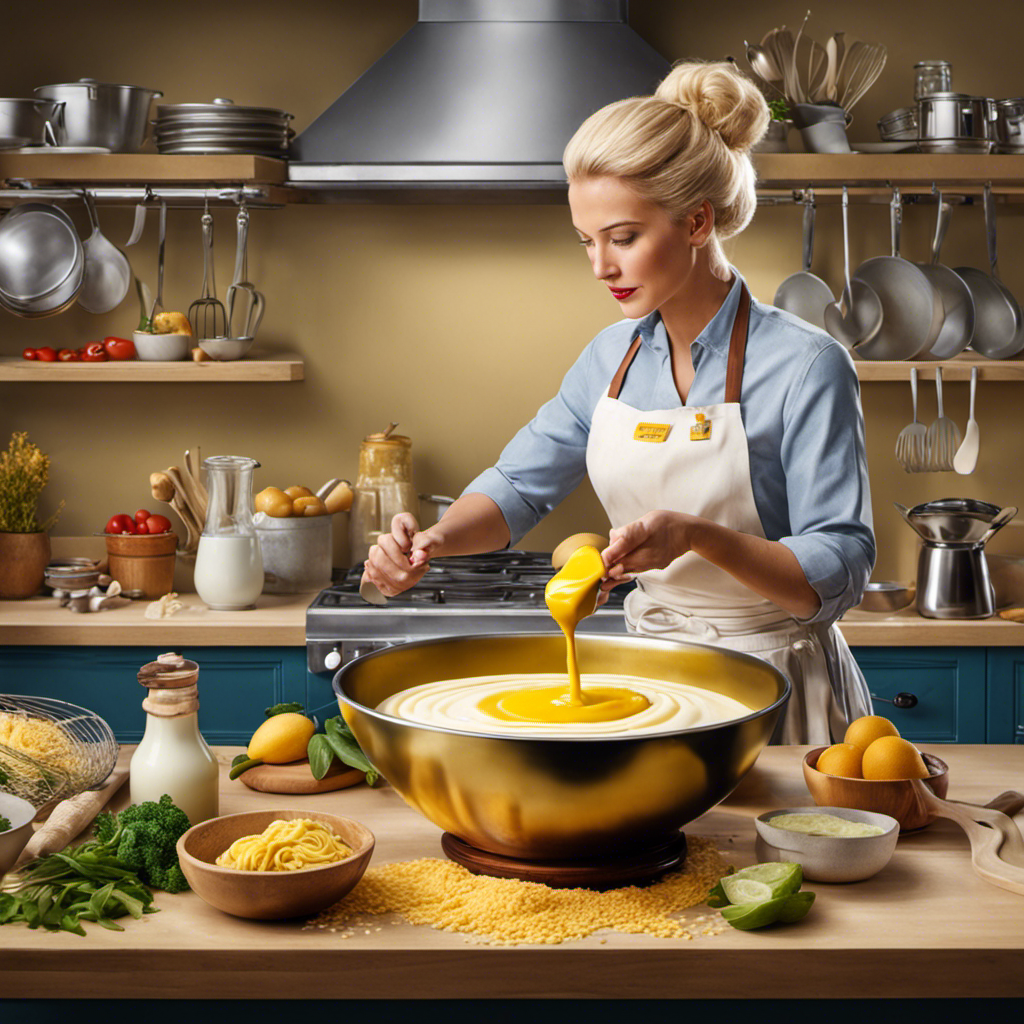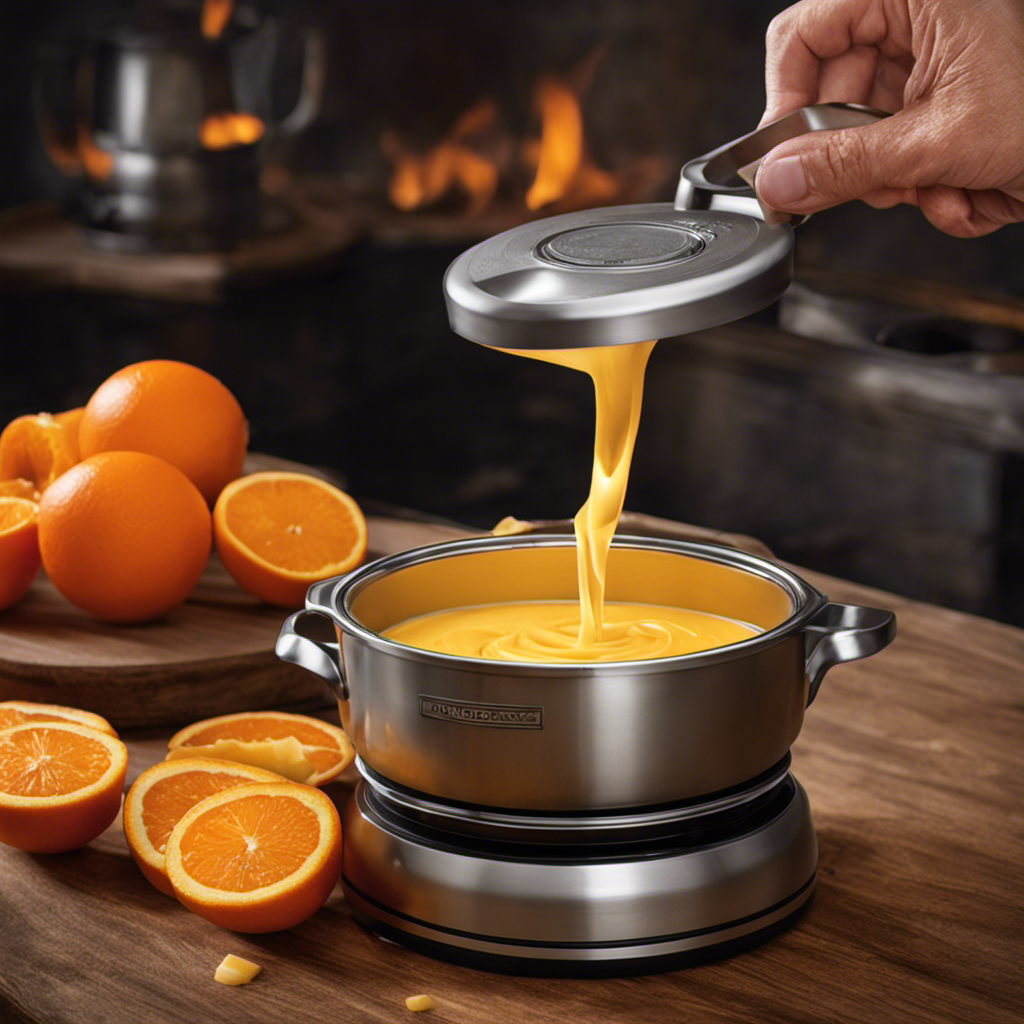I have always been intrigued by the potency of edibles. Were you aware that ingesting marijuana in edible form can be up to five times more potent than smoking it?
That’s why I’m excited to share my knowledge on how to make the strongest edibles with a Magical Butter Maker. In this article, I’ll guide you through the process of selecting the right ingredients, preparing your Magical Butter Maker, and infusing your butter or oil for maximum potency.
Get ready to elevate your edibles game to the next level!
Key Takeaways
- Different cannabis strains affect potency and flavor, so choose the strain based on desired outcome
- Precise measurements ensure consistent and potent edibles, so follow recommended dosages and measurements for desired strength
- Proper maintenance of the Magical Butter Maker ensures smooth and efficient functioning, resulting in the strongest edibles possible
- Decarboxylation is crucial for activating cannabinoids in cannabis, so ensure proper temperature and time for desired effects
Choosing the Right Ingredients
When making edibles with a magical butter maker, it’s important to choose the right ingredients for the best results. Different types of cannabis strains can greatly affect the potency and flavor of your edibles. Sativa strains are known for their uplifting and energizing effects, while indica strains are more relaxing and sedating. Hybrid strains offer a combination of both. Consider the desired outcome and choose a strain accordingly.
Additionally, the importance of proper measurements cannot be overstated. Precise measurements ensure that the THC content is evenly distributed throughout the recipe, resulting in consistent and potent edibles. Whether you’re using flower, concentrates, or oils, make sure to follow the recommended dosages and measurements to achieve the desired strength.
Now that we understand the importance of choosing the right ingredients, let’s move on to preparing your magical butter maker.
Preparing Your Magical Butter Maker
Once you’ve got everything ready, it’s time to start preparing your magical butter maker.
Before you begin, it’s important to ensure that your equipment is clean and well-maintained. Start by thoroughly cleaning the machine with warm soapy water, making sure to remove any residue or build-up from previous use. Rinse it well and dry it completely before moving on to the next step.
It’s also a good idea to check the blades and ensure they are sharp and in good condition. If needed, sharpen or replace them to guarantee optimal performance. Taking the time to properly clean and maintain your magical butter maker will ensure that it functions smoothly and efficiently, allowing you to create the strongest edibles possible.
Now that your machine is ready, let’s move on to the next step: decarboxylating your cannabis.
Decarboxylating Your Cannabis
Decarboxylation is a crucial step in the process of making potent edibles, as it activates the cannabinoids in the cannabis plant.
Understanding the optimal temperature and time for decarbing is essential to achieve the desired effects of your edibles.
There are various methods of decarboxylation, such as oven decarbing, sous vide, and using a decarboxylation device, each with its own benefits and considerations.
Importance of Decarboxylation
To make the strongest edibles with your magical butter maker, you’ll want to ensure the decarboxylation process is done correctly. Decarboxylation is important because it activates the cannabinoids in your cannabis, making them available for your body to absorb. Here are three reasons why proper decarboxylation is crucial for potent edibles:
-
Importance of proper dosage: Decarboxylation ensures that you have a consistent and accurate dosage in your edibles. Without it, you may end up with inconsistent results and unpredictable effects, making it difficult to control your experience.
-
Potential risks of improper decarboxylation: If you skip or rush the decarboxylation process, you risk ending up with edibles that are less potent or even ineffective. This can be a waste of your precious cannabis and can lead to disappointment.
-
Enhanced bioavailability: Properly decarboxylated cannabis increases the bioavailability of cannabinoids, meaning your body can absorb and utilize them more efficiently. This maximizes the medicinal and recreational benefits of your edibles.
Optimal Temperature and Time
When decarboxylating your cannabis, it’s important to find the optimal temperature and time to ensure the potency of your edibles. Achieving the perfect balance between heat and duration can make a significant difference in the final product. To help you navigate this crucial step, here is a table outlining the recommended temperature and time for decarboxylation:
| Temperature (°F) | Time (minutes) |
|---|---|
| 220 | 30 |
| 240 | 20 |
| 260 | 10 |
| 280 | 7 |
| 300 | 5 |
Optimal temperature control allows for the conversion of THCA, the non-psychoactive compound found in raw cannabis, into THC, the psychoactive component responsible for the desired effects. By fine-tuning the temperature and time, you can maximize the potency of your edibles. Additionally, understanding infusion techniques and how they interact with temperature is crucial for creating consistent and potent results. Experimentation with these parameters will help you achieve the perfect balance between flavor and potency in your homemade edibles.
Different Decarbing Methods
One way you can achieve the best results is by experimenting with different decarbing methods. Decarbing, or decarboxylation, is the process of heating cannabis to activate its compounds, such as THC and CBD, making them more bioavailable and potent.
Here are three different decarbing techniques and their benefits:
-
Oven Method: This is the most common method, where you bake your cannabis in the oven at a low temperature for a specific time. It’s easy and accessible for most people.
-
Sous Vide Method: This technique involves sealing your cannabis in a vacuum-sealed bag and immersing it in a water bath at a precise temperature. This method allows for precise control over the decarbing process.
-
Instant Pot Method: Using an Instant Pot, you can decarb your cannabis quickly and efficiently. This method is great for those who want to save time while still achieving effective decarboxylation.
Experimenting with these different decarbing techniques will allow you to find the method that works best for you, resulting in stronger and more potent edibles.
Infusing Your Butter or Oil
Mixing the decarboxylated cannabis with your butter or oil will infuse it with the desired potency and flavor. There are various infusing techniques you can use to achieve the best results.
One popular method is the double boiler method, where you gently heat the butter or oil with the cannabis to extract the cannabinoids without burning them. Another option is using a magical butter maker, which automates the process and ensures consistent results.
When it comes to flavor options, the possibilities are endless. You can add herbs, spices, or even fruits to enhance the taste of your infused butter or oil. Experimenting with different combinations can create a unique and enjoyable experience.
Remember to strain the mixture after infusion to remove any plant material and achieve a smooth and delicious final product.
Incorporating Your Infused Ingredient Into Recipes
Now that you’ve successfully infused your butter or oil with cannabis, it’s time to explore the exciting world of incorporating your infused ingredient into recipes.
This is where the magic happens and you can create delicious and potent edibles that will leave everyone wanting more. Here are three ways you can use your infused ingredient to elevate your culinary creations:
-
Infused Desserts: Add a dose of cannabis to your favorite sweet treats like brownies, cookies, or cakes. The richness of the infused butter or oil will give your desserts a unique twist and a delightful buzz.
-
Savory Dishes: Don’t limit yourself to just sweet treats! Infused butter or oil can also be used in savory dishes like pasta sauces, roasted vegetables, or even grilled meats. The subtle earthy flavor of cannabis can complement a variety of flavors and take your dishes to the next level.
-
Dressings and Marinades: Infused oils can be a fantastic addition to your homemade dressings or marinades. Drizzle it over a fresh salad or use it to marinate your favorite proteins for an extra kick.
With these ideas in mind, get creative and start experimenting with your infused ingredient. The possibilities are endless, and the results will surely impress your friends and family.
Dosage and Potency Considerations
When incorporating your infused ingredient into recipes, it’s important to consider the dosage and potency to ensure a safe and enjoyable experience. Calculating the dosage is the first step in creating edibles with consistent potency.
To calculate the dosage, you need to know the THC content of your infused ingredient and the desired dosage per serving. For example, if your infused ingredient has a THC content of 10%, and you want each serving to contain 10mg of THC, you would need to use 100mg of your infused ingredient in each serving.
Maximizing potency involves using the right amount of infused ingredient without overpowering the flavors of your recipe. Experimentation is key to finding the perfect balance between potency and taste.
Storing and Preserving Your Edibles
To keep your edibles fresh and potent for longer, it’s important to store them in an airtight container in a cool, dark place. Here are some effective storing methods to ensure the longevity of your homemade treats:
-
Choose the right container: Opt for glass jars or metal tins with a tight seal to prevent air and moisture from reaching your edibles.
-
Keep them cool: Heat can degrade the potency of your edibles, so store them in a cool place away from direct sunlight. The ideal temperature is around 60-70°F (15-21°C).
-
Assess the shelf life: Different edibles have varying shelf lives. Assess the ingredients used and their expiration dates to determine how long your edibles will stay fresh.
By following these storing methods and conducting a shelf life assessment, you can enjoy your edibles at their full potency for longer.
Now, let’s move on to some tips and tricks for making the strongest edibles.
Tips and Tricks for Making the Strongest Edibles
If you want your homemade treats to be as potent as possible, follow these tips and tricks.
Enhancing flavor is key to creating delicious and potent edibles. One common mistake to avoid is using low-quality ingredients. Choose fresh and high-quality ingredients to ensure the best flavor and potency.
Another mistake is not properly decarboxylating your cannabis. This process activates the THC, making it more potent. To do this, bake your cannabis at a low temperature before infusing it into your butter or oil.
Additionally, make sure to properly dose your edibles. Start with a low dose and gradually increase if needed.
Finally, be patient and allow enough time for the infusion process. Rushing can result in a weaker potency.
Frequently Asked Questions
Can I Use Any Type of Cannabis Strain to Make Edibles With a Magical Butter Maker, or Are There Specific Strains That Work Best?
I prefer using specific strains when making edibles with a Magical Butter Maker. Some strains have higher levels of THC, which can result in stronger edibles. It’s important to choose strains that work best for your desired potency.
Is It Possible to Make Edibles Using Alternative Ingredients Like CBD Oil or Hemp Flower in the Magical Butter Maker?
Using alternative ingredients like CBD oil or hemp flower in the Magical Butter Maker opens up a world of possibilities for creating potent edibles. However, it’s important to also consider the benefits of using specific cannabis strains for enhanced effects.
How Long Can I Store My Infused Butter or Oil Before It Goes Bad?
To maximize freshness, store infused butter or oil in an airtight container in the refrigerator for up to two weeks or in the freezer for up to six months. If it develops a rancid smell or taste, discard it.
Can I Use the Infused Ingredient in Recipes That Require High Heat, Such as Baking or Frying?
Using infused ingredients in high heat recipes, such as baking or frying, can diminish the potency of the edibles. It’s important to be mindful of this when preparing edibles to ensure the desired effects are achieved.
Are There Any Non-Traditional Uses for the Magical Butter Maker, Besides Making Edibles?
There are indeed non-traditional uses for the Magical Butter Maker. It can be used to make infused beauty products like lotions and salves, as well as creating infused beverages like cocktails and mocktails.
Conclusion
In conclusion, making the strongest edibles with a Magical Butter Maker is a process that requires attention to detail and precision. By choosing the right ingredients and preparing your machine, you can ensure the best results.
Decarboxylating your cannabis is essential for activating its psychoactive properties. This step involves heating your cannabis at a specific temperature to convert the non-psychoactive THCA into THC.
Infusing your butter or oil with the decarboxylated cannabis is the next crucial step. The Magical Butter Maker simplifies this process by providing a controlled environment for infusion.
Once you have infused your butter or oil, you can incorporate it into various recipes to create potent and delicious treats. From brownies to cookies, the possibilities are endless.
Remember to consider dosage and potency when consuming your edibles. Start with a small amount and wait for the effects to kick in before consuming more.
Lastly, it is important to store your edibles properly to maintain their freshness and potency. Keep them in an airtight container in a cool, dark place to prevent degradation.
So, why settle for average edibles when you can create mind-blowingly strong ones? With the Magical Butter Maker, you can elevate your edibles game and enjoy potent and delicious treats.










